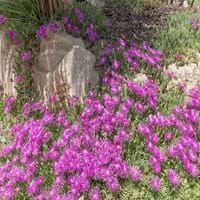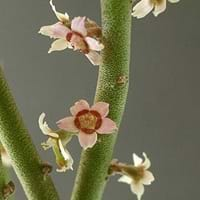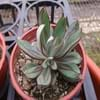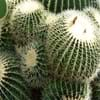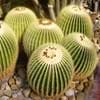Life Span
Perennial
Perennial
Type
Flowering Plants
Shrub
Origin
Southern Africa, South Africa
Texas, Mexico
Types
Not Available
not available
Habitat
By seashore, gardens
Semi desert, shade of desert, Shaded sites
USDA Hardiness Zone
Not Available
10-13
AHS Heat Zone
Not Available
12-9
Sunset Zone
Not Available
23, 24
Habit
Not Available
Clump-Forming
Minimum Height
Not Available
Minimum Width
Not Available
Flower Color
Not Available
White, Light Pink
Flower Color Modifier
Not Available
Bicolor
Fruit Color
Non Fruiting Plant
Pink
Leaf Color in Spring
Not Available
Gray Green
Leaf Color in Summer
Not Available
Gray Green
Leaf Color in Fall
Not Available
Gray Green
Leaf Color in Winter
Not Available
Gray Green
Leaf Shape
Succulent
Not Applicable
Plant Season
Spring, Summer, Fall, Winter
Spring, Summer, Fall, Winter
Sunlight
Full Sun, Partial Sun
Full Sun
Growth Rate
Not Available
Very Slow
Type of Soil
Not Available
Sand
The pH of Soil
Not Available
Neutral, Alkaline
Soil Drainage
Well drained
Well drained
Bloom Time
Not Available
Early Spring
Tolerances
Not Available
Dry Conditions
Where to Plant?
Container, Ground, Pot
Ground
How to Plant?
Stem Planting, Transplanting
Cuttings, Divison, Rooted stem cutting
Plant Maintenance
Medium
Medium
Watering Requirements
Average Water Needs, Do Not over Water, Never Over-water, Requires watering in the growing season
Keep the Soil well drained, occasional watering once established
In Summer
Average Water
Lots of watering
In Spring
Average Water
Moderate
In Winter
Average Water
Average Water
Soil pH
Not Available
Neutral, Alkaline
Soil Type
Not Available
Sand
Soil Drainage Capacity
Well drained
Well drained
Sun Exposure
Full Sun, Partial Sun
Full Sun
Pruning
Remove damaged leaves, Remove dead branches, Remove dead leaves
Remove damaged leaves, Remove dead branches, Remove dead leaves
Fertilizers
All-Purpose Liquid Fertilizer
All-Purpose Liquid Fertilizer
Pests and Diseases
Red blotch
Pests and diseases free
Plant Tolerance
Drought
Dry Conditions
Flowers
Showy
Not Available
Flower Petal Number
Single
Single
Showy Fruit
Not Available
No
Edible Fruit
Not Available
No
Fragrant Fruit
Not Available
No
Fragrant Leaf
Not Available
No
Fragrant Bark/Stem
Not Available
No
Showy Foliage
Not Available
No
Showy Bark
Not Available
No
Foliage Texture
Bold
Bold
Foliage Sheen
Not Available
Matte
Self-Sowing
Not Available
No
Attracts
Butterflies
Butterflies, Not Available
Allergy
Not Available
Not Available
Aesthetic Uses
Beautification, Bouquets, Cottage Garden, Decorating walls, Ground Cover, Landscape Designing, Showy Purposes, Used for decorating walls, fences, gates, hedges, etc.
Borders, Slopes hedging
Beauty Benefits
Not Available
Making cosmetics, Moisturizing
Environmental Uses
Food for insects
Air purification
Medicinal Uses
No Medicinal Use
Eczema
Part of Plant Used
Flowers
wax
Other Uses
Decoration Purposes, Showy Purposes, Used as Ornamental plant
Oil is used in perfume, soaps, creams, etc.
Used As Indoor Plant
No
No
Used As Outdoor Plant
Yes
Yes
Garden Design
Container, Edging, Groundcover, Mixed Border, Rock Garden, Wall
Rock Garden, Wall, Wildflower
Botanical Name
DELOSPERMA
EUPHORBIA antisyphilitica
Common Name
Trailing Iceplant
wax plant
In Hindi
Delosperma cooperi
Candelilla
In German
Mittagsblume
candelilla
In French
Delosperma cooperi
candelilla
In Spanish
Delosperma cooperi
candelilla
In Greek
Delosperma cooperi
candelilla
In Portuguese
Delosperma cooperi
candelilla
In Polish
Delosperma cooperi
candelilla
In Latin
Delosperma cooperi
candelilla
Phylum
Not Available
Magnoliophyta
Class
Magnoliopsida
Magnoliopsida
Order
Caryophyllales
Euphorbiales
Family
Aizoaceae
Euphorbiaceae
Genus
Caryophyllales
Euphorbia
Clade
Angiosperms, Core eudicots, Eudicots
Angiosperms, Eudicots, Rosids
Tribe
Not Available
Not Available
Subfamily
Ruschioideae
Not Available
Number of Species
Not Available
Properties of Delosperma cooperi and Candelilla
Wondering what are the properties of Delosperma cooperi and Candelilla? We provide you with everything About Delosperma cooperi and Candelilla. Delosperma cooperi doesn't have thorns and Candelilla doesn't have thorns. Also Delosperma cooperi does not have fragrant flowers. Delosperma cooperi has allergic reactions like Not Available and Candelilla has allergic reactions like Not Available. Compare all the properties and characteristics of these two plants. Find out which of these plant can be used as indoor plant. If you are interested to decorate your house and garden, find out aesthetic uses, compare them and select the plant which will beautify your surrounding. Along with beautification, try comparing medicinal and edible uses of Delosperma cooperi and Candelilla and you can choose the plant having best and most benefits.
Season and Care of Delosperma cooperi and Candelilla
Season and care of Delosperma cooperi and Candelilla is important to know. While considering everything about Delosperma cooperi and Candelilla Care, growing season is an essential factor. Delosperma cooperi season is Spring, Summer, Fall and Winter and Candelilla season is Spring, Summer, Fall and Winter. The type of soil for Delosperma cooperi is Not Available and for Candelilla is Sand while the PH of soil for Delosperma cooperi is Not Available and for Candelilla is Neutral, Alkaline.
Delosperma cooperi and Candelilla Physical Information
Delosperma cooperi and Candelilla physical information is very important for comparison. Delosperma cooperi height is Not Available and width Not Available whereas Candelilla height is 45.70 cm and width 90.00 cm. The color specification of Delosperma cooperi and Candelilla are as follows:
Delosperma cooperi flower color: Not Available
Delosperma cooperi leaf color: Not Available
Candelilla flower color: White and Light Pink
- Candelilla leaf color: Gray Green
Care of Delosperma cooperi and Candelilla
Care of Delosperma cooperi and Candelilla include pruning, fertilizers, watering etc. Delosperma cooperi pruning is done Remove damaged leaves, Remove dead branches and Remove dead leaves and Candelilla pruning is done Remove damaged leaves, Remove dead branches and Remove dead leaves. In summer Delosperma cooperi needs Average Water and in winter, it needs Average Water. Whereas, in summer Candelilla needs Lots of watering and in winter, it needs Average Water.
